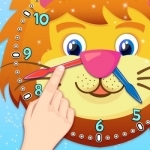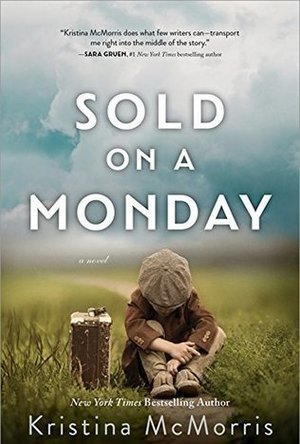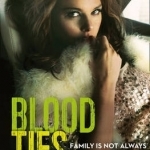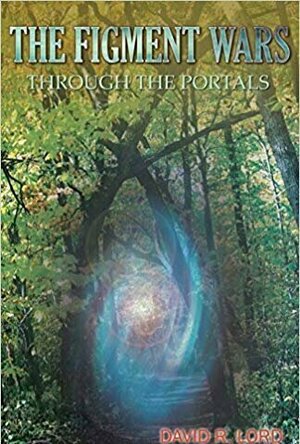Leanne Crabtree (480 KP) rated Running on Empty (Mending Hearts, #1) in Books
Jan 8, 2021
And I have to say why did I not read this sooner?! I loved it.
4.5 stars, instead of 5 simply because of all the giggling. I think even Blake giggled at one bit, which made me laugh but seemed rather surreal.
The story itself, though... God, I'm a sucker for a good romance and this was so heartfelt. He'd loved her forever and she ended up with someone else, so for them to get a second chance... *sigh* I was having a good swoon over this one.
I'm not always a fan of children in my romance books but how could I not love these three? They were adorable! I couldn't stop smiling/laughing throughout at some of the stuff that came out of the kids mouths and just in general.
This was definitely something I enjoyed and I look forward to reading more books by the author.
Rachel King (13 KP) rated The Lens and the Looker in Books
Feb 11, 2019
Backing up, I was very interested in the present-day time period of 2347 and the few details that Kaufman spared regarding this society. Unfortunately, not much is explained about how this society came to be. A brief explanation is given for the planetary population of 300 million, along with other random details interspersed throughout the book, such as every child born is paired with an A.I., people are implanted with a device that keeps disease and infection at bay, and parents are only allowed to have one child with a lottery sometimes allowing for a second child. The purpose of the History Camps are explained through the rebellious attitudes of the three main characters and how they can easily manipulate the system for their own entertainment. As a parent, the word that continually echoed through my head regarding these children in the Hard-Time History Camp is "Spoiled!" Though they are supposed to be learning about how the rebellion of the human populations of the past caused everything from war, to disease, to poverty and famine, the way the children are coddled and protected from any sort of real pain or hardship makes me wonder how these History Camps ever accomplished anything of lasting value in any child.
Once the children are brought to the real Verona and abandoned as orphans, they finally begin to get a taste of real difficulty and hardship, but this is where the believability ends for me. The children had a single day in the History Camp Verona to get acquainted with their roles, and they show up in the real Verona as near-experts, maneuvering the details of their jobs to accommodate for comfort and ease of use that the family they work for is not familiar with, of course all with the help and direction of a very convenient genie. On top of all of this, the three children become agreeable, cooperative, and hard-working practically overnight, with little sign of the rebellious tendencies that put them in a History Camp in the first place. These transitions in character development felt forced to me.
Another aspect that really bugged me from the beginning of the book was the awkwardness of the dialog throughout the book, specifically regarding the children's speech. It felt stilted and over-simplified, and slowed down my reading because I consistently felt that children today did not speak like this. Some of the speech of the people native to the real Verona also seemed strange, but I attributed that to the speech of the time period.
Many of the characters took on unique facets that made them rather memorable to me, such as Ugilino's looks and arrogance, Signora della Cappa's madness, and Shamira's artistic inclinations. The budding romance between Hansum, or "Romero", and Guilietta copies the Shakespearean play, "Romeo and Juliet", in many ways, down to the presence of a Father Lurenzano, and I have to wonder about Kaufman's motivations for working this tale into the plot. And again, their romance also felt forced and over-the-top, missing the reality-warping conviction that is obvious in the original Shakespeare story.
I also have to wonder how these advancements that the three children are introducing to 1347 Verona are actually affecting the progression of time, since this is a much harped-upon concern regarding time travel. The only thing that is apparent to both the children and the reader is the quaint changes made to the appearance of the genie. Something else that is also mentioned early on is that this is also the same time period as the Black Plague, which has yet to make an appearance. Hopefully, the next book in the trilogy will address these things, The Bronze and the Brimstone: The Verona Trilogy, Book 2.
This book seemed geared to appeal to pre-teens and young teens in many ways, but as an adult reader, it left much to be desired for me.

Interactive Clock Telling Time to Read Clocks
Entertainment
App
If you are looking for fun and easy games for kids, search no more because we've created a perfect...
Night Reader Reviews (683 KP) rated The Figment Wars: Through the Portals in Books
Jan 9, 2020
Thomas and his little brother Isaac are visiting their cousin Emily at her house and they are not exactly having a good time. At Emilys house, the boys dont even have a TV to watch and they are extremely bored. Then one afternoon when Thomas goes to the woods behind the house to get Emily for lunch something amazing happens. The trees themselves bend and move, forming a portal that all three children fall into. The portal transports the children into the Realm of Imagination, a place where all the things humans imagine come to life.
https://nightreaderreviews.blogspot.com/2019/07/review-figment-wars-through-portals-by.html
https://www.austinmacauley.com/book/figment-wars-through-portals
Almost as soon as the children arrive they are attacked by Monsters but luckily they are saved by Heroes and are taken to the Library in the Impossible City. It is here that they meet Belactacus who believes that the children are Real and not just confused imaginary friends. Sadly the Council who is in charge of the portals that allow beings in the Realm of Imagination to go to the Realm of Reality is corrupted and the children are denied a portal back home. Shortly after this decision Monsters attack the Impossible City and even overwhelm the Heroes. Now the children must find a way to stop the corrupted council member from bringing all the Monsters from human imagination to life in the Realm of Reality, home of the humans.
What I liked best might not seem like much but for a story such as this one, it makes a big difference. I liked how not only was the idea of the Realm of Imagination a great concept but the creation of the Realm was well explained. Also, some of the main people in the Realm were explained to be the result of collective consciousness in humans such as the standard idea of a mother figure which was a very nice touch. What I didnt like was the budding relationship between Thomas and Emilys old imaginary friend. I actually thought it was a little creepy. At times I found myself hoping that she would be able to become real and then I thought that it would be way too much like Thomas having a relationship with his cousin.
This book falls solidly into the YA or young adult group of readers. I know this is a broad group ranging from middle school and older, but this book is actually really good and I saw nothing that would make in inappropriate for young readers. The only thing to be careful about is if an advanced reader in elementary school wanted to read this book. I dont know how well they would take to the idea that monsters such as the Boogeyman are real and just living in a different dimension so to speak. With all that being said I rate this book a 3 out of 4. Everything is extremely well thought out in this book. The idea of the Library and the collective consciousness of humans was amazing. The only reason why this book did not get a perfect rating is that I still felt like it was missing something that gave it that wonderful ability to really stand out, but few books have that.

Kids in the Kitchen: More Than 50 Fun and Easy Recipes to Suit Your Child's Age and Ability
Book
Let your kids make their own food with 50 fun recipes that will not only encourage future healthy...

The Loving Husband: You'd Trust Him with Your Life, Wouldn't You...?
Book
Can you ever truly know the one you love? Fran Hall and her husband Nathan live in a farmhouse on...

Sold on a Monday
Book
From New York Times bestselling author Kristina McMorris comes another unforgettable novel inspired...
GreatDepression Historical Fiction journalist newspaper mob
Heather Cranmer (2721 KP) created a post
Nov 21, 2022

Blood Ties: Family is Not Always a Place of Safety (Tales of the Notorious Hudson Family, Book 4)
Book
Family is not always a place of safety. Kathleen was just eight years old when her mother was...

Edward Lear's Nonsense Birds
Book
Edward Lear loved birds. Of all the animals that sprang from his quirky imagination, birds held a...


